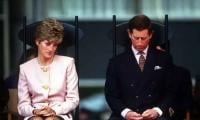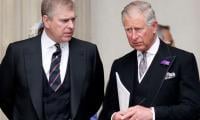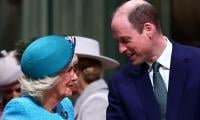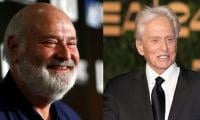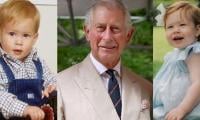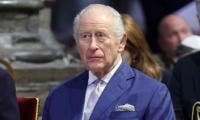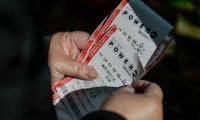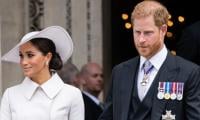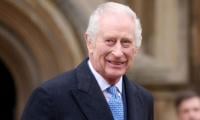Says each group’s head wanted to be chief of TTP; Fazlullah became chief through lucky draw; Afghan govt, NDS were completely aware of our steps in Afghanistan; they used to guide us through the entire scheme: Taliban ex-spokesman speaks in
Geo TV show ‘Jirga’ with Saleem Safi
KARACHI: The Inter-Services Public Relations (ISPR) Director General Major General Asif Ghafoor gave this glad tiding to the people of Pakistan in a press conference a few days ago that the official spokesperson of Tehreek-e-Taliban Pakistan (TTP) and Jamaat-ul-Ahrar had surrendered himself before the security forces. The DG ISPR considered this to be a victory for the Operation Raddul Fasaad. He further said that if such people, who were fighting against the state, army or government in the past, would surrender themselves before the state, then this would be considered as a victory of the ongoing operation.
Ehsanullah Ehsan’s name was a sign of terror for many years, Saleem Safi said while starting his famous show ‘Jirga’ on Geo TV. Safi, before starting the interview of Ehsanullah Ehsan, said that the motive of this interview was to know how Ehsanullah Ehsan joined the TTP; the stages he had to go through during his stay with the TTP; and the reasons for which he decided to leave the TTP and surrender himself before the security forces.
Saleem Safi’s first question included three points, in which he asked: “How did you get into this all? When did you join this movement? Where and how were you provided with training?”
Ehsanullah Ehsan said that when the organisation was started in early 2008, the motto of the organisation was to do jihad against united powers in Afghanistan. He said that the training base was in Mohmand Agency and they got training over there. He also revealed that the instructors in the training camp belonged to Afghanistan. He said that he started inclining towards this movement when he was a college student and when there was an operation in Mohmand Agency in 2011, so they moved to Kunar in Afghanistan.
Ehsan said that later he was called to Waziristan where he was appointed as the official local spokesperson.
Saleem Safi’s second question was regarding the separation of TTP and Jamaat-ul-Ahrar. He asked as to why both the terrorist organisations parted ways.
Ehsanullah Ehsan replied that as far as he was aware, the TTP was not an organised movement. He said: “It was like an umbrella. Baitullah Mehsud had gathered people (groups) from rural and urban areas to make the TTP. At that time, each area had its own chief. After Baitullah Mehsud, Hakimullah Mehsud took over the leadership and controlled the TTP. However, the local chiefs of all areas were willing to take on the leadership after Baitullah Mehsud. This thing went to the Shura, and created huge differences in the Shura. This went so far that Shaikh Maqbool and Nadeem Abbas pointed guns at each other. After it could not reach a decision, Maulana Fazlullah was elected as the chief of the organisation after a lucky draw. And Khalid Haqqani was appointed as his associate.”
Ehsan said that when he had a dispute with the Shura, he went to Nangarhar. He added that after the formation of Jamaat-ul-Ahrar, he moved to various cities of Afghanistan.
In his next question, Saleem Safi asked him whenever he had to go to Mazar Sharif from Khost or Jalalabad from Khost, he had to pass Kabul. Safi asked if the Afghan government wasn’t aware of his moves or was the Afghanistan government involved in arranging those movements?
In reply, Ehsan said that the Afghan government was fully aware of all the movements. He said: “We used to inform them beforehand that we would be passing by this area and we should not face any kind of difficulty. This entire thing had a proper system. All the functioning movements had designated committees who were responsible for contacting the Afghan government or the NDS. Whenever we were leaving for any journey or mission, we used to inform our committee and in return the committee used to talk to the NDS or the Afghan government to facilitate the movement without creating any hindrance.”
Saleem Safi’s next question was related to the US involvement in this case. He said that there were Americans in Afghanistan and American drone attacks were also happening there. He further added that if the Americans were aware of these activities or not. He also questioned if they were scared of the American drone attacks.
In reply, Ehsanullah Ehsan said that mostly in urban areas, the Afghan forces have a greater hold. He said: “If ever we were commuting or going for a mission, our committee used to inform the NDS who used to guide us through the right track. They also used to make us aware of the potential hindrances on the way, where they had no control in the presence of NATO forces or Americans. Therefore, we had to control the situation over there on our own.”
In his next question, Saleem Safi asked if Omar Khorasani was living in Nangarhar. “When did you meet him the last time?” he asked.
In his reply, Ehsan said that Omar Khorasani had two to four houses in Afghanistan and he had three wives. “Therefore, sometimes he is in Jalalabad, sometimes in Khost and sometimes in Kabul,” he said. “Last time, I met him five to six months ago when he came to Khost to meet me.”
Answering the news of Khorasani being injured sometime ago, Ehsan said that six months after the formation of Jamaat-ul-Ahrar in 2015, Khorasani was injured in the area of Lalpura. “He went to India to get treatment where he was completely cured. He has an Afghan passport. On his return, he told us that he went to India to get treatment.”
On a question on the whereabouts of Maulana Fazlullah, Ehsan said that the Maulana was living in Kunar.
On answering a question about the relations between both groups, Ehsan said that the relations between Omar Khorasani and Maulana Fazlullah group were not quite good as each head was looking to get in total power and considered people under him as slaves.
The next question was about the potential merger of Jamaat-ul-Ahrar and Daesh. Ehsan was asked if they both had merged or Jamaat-ul-Ahrar had become a fellow organisation of Daesh.
Ehsan replied that there was a time when Omar Khorasani tried to become the ‘Don’. “Omar Khorasani demanded from Daesh to make him the chief representative of their organisation in the Sub-continent. However, Daesh didn’t oblige. Khorasani was told that if he wanted to be a part of the organisation that was fine but he didn’t have the authority to demand anything. It was on Daesh to give him any suitable position. Therefore, they both couldn’t work together due to the differences.”
Next, Saleem Safi asked him that if RAW had in the past tried to join the groups of TTP and forced them to work on the separation of Balochistan. To which, he answered that he had heard about these things while being in the organisation from various people. He said that the organisation was also informed to improverelationships with other countries. He said that they had problem on the Kashmir policy and the China-Pakistan Economic Corridor as well. “However, RAW always coordinated and sent in their messages to us through the NDS. It is one of the main aims of RAW to create communal tensions in Pakistan. One of their main agendas is to create a rift between Punjabis and Pashtuns.”
Saleem Safi said: “Recently, after the attack in Lahore, the Pakistani Army had attacked their sites on which the Afghan government had retaliated. Generally, it was claimed that your camps were targeted over there. However, the Afghan govt kept making contrary claims. Did it really happen? Were your camps really targeted?”
In reply, Ehsan said that Jamaat-ul-Ahrar’s camps were targeted over there. “It is important to notice that most of the people started leaving that place after the attacks. Some commanders had also died there. After those attacks, people are really worried over there. There is no place over there.”
On this, Saleem Safi asked as the people had decreased, the income must have decreased too along with the supply of arms.
In reply, Ehsanullah Ehsan said that the arms and money had not reduced a bit because there were lots of ways to recover and obtain these things. “They also receive extortion money from common people. If they don’t oblige, their homes are obliterated and they are killed.”

